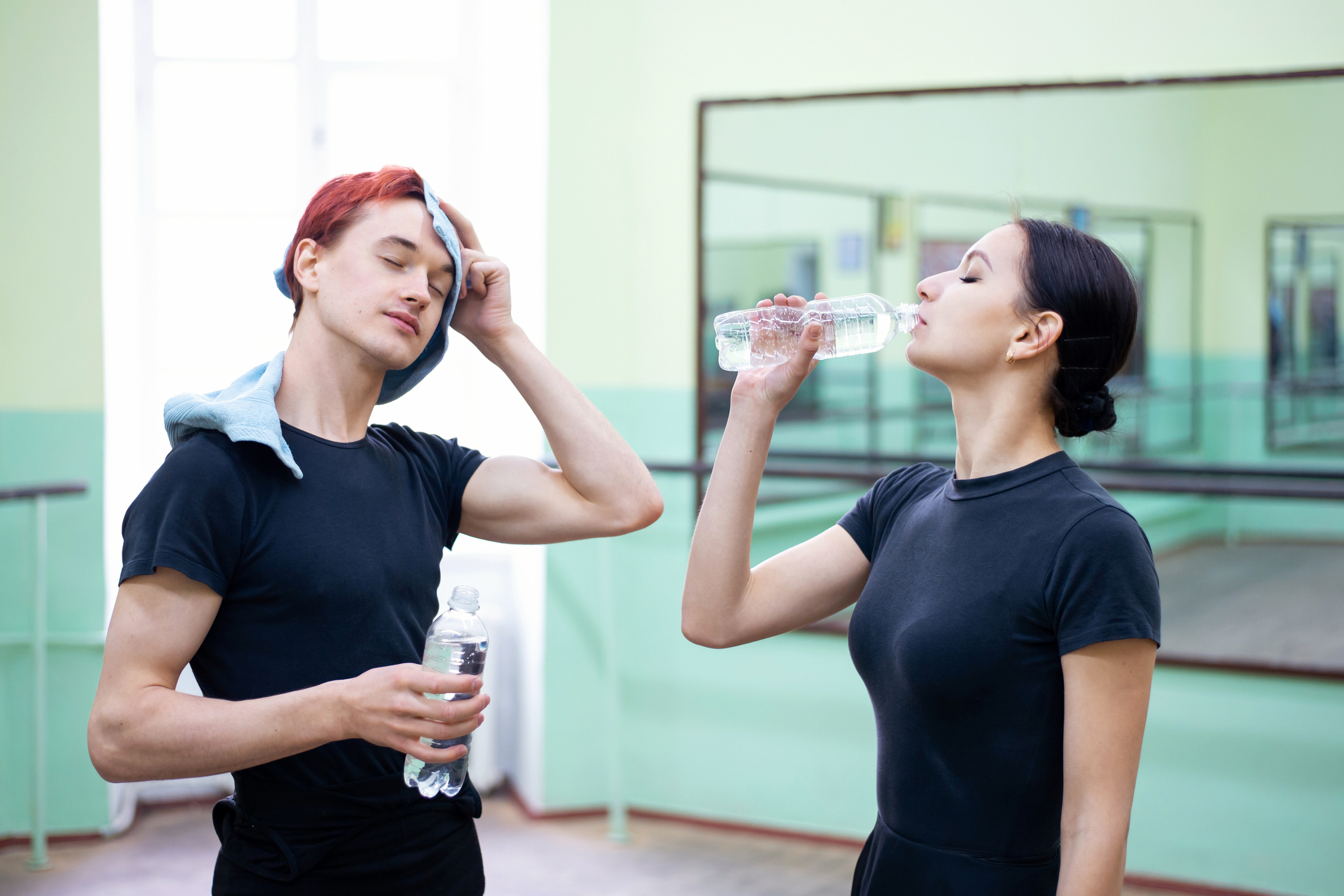
Hydration is an important part of your nutrition plan. Your body relies on water as a medium to support all metabolic reactions—water cools you and even plays a role in the absorption and digestion of nutrients.
But for many dance educators, staying hydrated falls to the bottom of the priority list behind tight schedules and morning cups of coffee. Since we lose water through sweating, breathing and movement, it’s important to replace losses consistently. Without a proper hydration plan, you can risk experiencing fatigue and muscle soreness. Even just mild dehydration can cause headaches and dizziness, making it hard to concentrate and teach.
Supporting your students means supporting your body and its vast capabilities. Use these tips to formulate a hydration plan that is both manageable and practical.
Be Proactive
Thirst is a late-stage indicator that your body needs to be rehydrated, and intense dance schedules make it easy to ignore thirst cues. Invest in a reusable water bottle and aim to refill it several times each day. Offering your dancers hydration breaks is another great way to remind yourself of the same habit. And if you’re not a fan of plain water, try hydrating alternatives such as flavored water, herbal teas, milk, smoothies and fresh juices. Moderate amounts of coffee can also count towards your daily fluid intake, but excessive amounts can have a diuretic effect that exacerbates dehydration.
Include Electrolytes
It might surprise you to learn that water alone is limited in its ability to hydrate you. Electrolytes like sodium and potassium are minerals that help maintain your body’s delicate fluid balance. When obtained from food and drinks, these minerals enhance your body’s absorption of water. Supplements like electrolyte tablets and powders can be helpful for educators who struggle to eat consistently throughout the day, but these can also be expensive. Packaged foods like crackers, pretzels and popcorn are more economical and richer in sodium—making them helpful options for educators needing to rehydrate. Fresh produce is also rich in potassium. Adding it to your diet not only offers a source of energizing carbohydrates, but also helps to replace electrolytes lost from sweat.
Add Hydrating Snacks
In general, aim to drink about 3 to 3.5 liters of water daily. This equates to about 12 to15 cups. Your fluid intake doesn’t only have to come from beverages, though. Fresh fruits and vegetables have a high water content, which counts toward your daily hydration goal. When accessible, include foods like cucumbers, melon, squash, oranges, leafy greens, grapes, radishes and tomatoes in your balanced meals and snacks to add more hydration to your day.

Use the Bathroom as a Guide
Oftentimes, urine that is darker and smaller in volume is a sign that you probably need to hydrate. However, this test is subjective and can be impacted by certain medications and supplements. For example, B-12 supplements are known to artificially brighten the color of urine since excess of the vitamin is excreted via the urine.
Consistency Matters
Spread your drinks throughout the day. For educators teaching back-to-back classes, smaller sips are often better than large gulps. You’ll also want to start hydrating upon waking up because this will help hydrate your body from the time you start teaching.
Building a hydration plan can help to support your teaching and dancing. If you struggle with staying hydrated, consult a registered dietitian nutritionist who can help you strategize a hydration plan that works for your individual needs.





